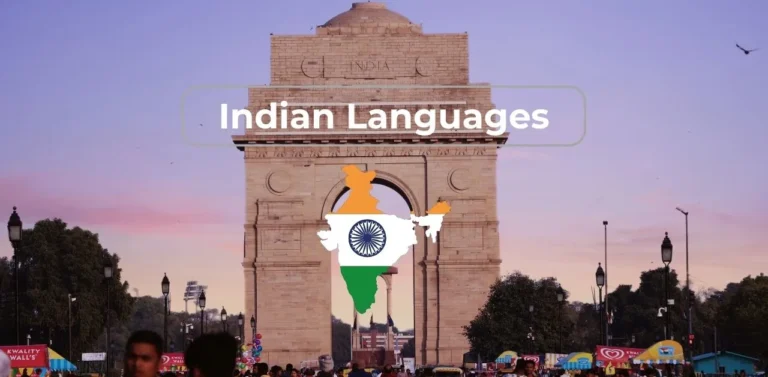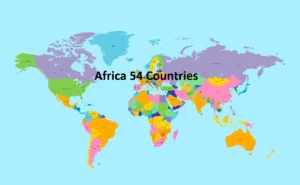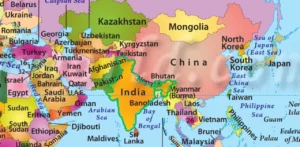India, a land of diversity and culture, is known for its rich linguistic heritage. With over 1.4 billion people, India boasts an astonishing array of languages.
With over 1,600 languages spoken, India’s linguistic diversity is a testament to its complex history, regional variations, and rich heritage.
Hindi and English are the official languages of India and are used for official communication at the national level.
Why there are so many Indian Languages
India is home to a massive number of languages, estimated at over 1,600, according to the People’s Linguistic Survey of India.
This linguistic diversity is a reflection of the country’s complex history, geography, and cultural tapestry.
1. Historical Factors
One of the primary reasons for India’s linguistic diversity is its long and varied history. Over the centuries, India has seen numerous dynasties, empires, and rulers, each leaving their imprint on the country’s language landscape.
Sanskrit, an ancient Indo-Aryan language, played a significant role in shaping many modern Indian languages.
- Sanskrit: This classical language of India has influenced several languages like Hindi, Bengali, Marathi, and Kannada. It is the root of many religious and scientific texts.
- Dravidian Languages: In the southern part of India, Dravidian languages like Tamil, Telugu, Kannada, and Malayalam have a rich linguistic history that predates Sanskrit.
- Persian and Arabic: The influence of Persian and Arabic languages, due to historical trade and conquests, can be seen in languages like Urdu.
2. Regional Geography
India’s vast and varied geography is another significant factor contributing to its linguistic diversity. Different regions, with their unique terrain and demographics, have given rise to distinct languages.
- Hindi: As one of the most widely spoken languages in India, Hindi finds its roots in the northern heartland. It has evolved from the ancient language of Prakrit and Sanskrit and is written in the Devanagari script.
- Bengali: Predominantly spoken in the eastern state of West Bengal and the neighboring country of Bangladesh, Bengali is known for its poetic richness and cultural significance.
- Tamil: In the southern state of Tamil Nadu, Tamil thrives as one of the oldest classical languages in the world. It has a rich literary tradition spanning over two thousand years.
3. Cultural and Social Diversity
India’s cultural and social diversity also plays a vital role in the proliferation of languages. Different communities and ethnic groups have their own languages and dialects.
- Punjabi: Spoken in the northwestern state of Punjab, Punjabi is known for its vibrant culture and is the native language of the Sikh community.
- Marathi: Marathi, spoken in the western state of Maharashtra, has a rich literary tradition and is the language of iconic figures like Chhatrapati Shivaji and Dr. B. R. Ambedkar.
- Malayalam: The southern state of Kerala is home to Malayalam, a language with its own script, which boasts a unique literary heritage.
Languages Spoken by Percentage
Here is the table showing the native or first language spoken by the number of people and their percentage.
1. Native Language
| Rank | Language | Percentage | Speakers |
| 01 | Hindi | 43.63% | 528,347,193 |
| 02 | Bengali | 8.03% | 97,237,669 |
| 04 | Telugu | 6.70% | 81,127,740 |
| 03 | Marathi | 6.86% | 83,026,680 |
| 05 | Tamil | 5.70% | 69,026,881 |
| 06 | Gujarati | 4.58% | 55,492,554 |
| 07 | Urdu | 4.19% | 50,772,631 |
| 08 | Kannada | 3.61% | 43,706,512 |
| 09 | Odia | 3.10% | 37,521,324 |
| 10 | Malayalam | 2.88% | 34,838,819 |
| 11 | Punjabi | 2.74% | 33,124,726 |
| 12 | Assamese | 1.26% | 15,311,351 |
| 13 | Maithili | 1.12% | 13,583,464 |
| 14 | Bhili/Bhilodi | 0.86% | 10,413,637 |
| 15 | Santali | 0.61% | 7,368,192 |
| 16 | Kashmiri | 0.56% | 6,797,587 |
| 17 | Gondi | 0.25% | 2,984,453 |
| 18 | Nepali | 0.24% | 2,926,168 |
| 19 | Sindhi | 0.23% | 2,772,264 |
| 20 | Dogri | 0.21% | 2,596,767 |
2. Total Percentage
| No. | Language | Figure | % of total population |
| 1 | Hindi | 691,347,193 | 57.09% |
| 2 | Bengali | 107,237,669 | 8.85% |
| 3 | Telugu | 94,127,740 | 7.77% |
| 4 | Marathi | 99,026,680 | 8.18% |
| 5 | Tamil | 77,026,881 | 6.36% |
| 6 | Gujarati | 60,492,554 | 4.99% |
| 7 | Urdu | 62,772,631 | 5.18% |
| 8 | Kannada | 58,706,512 | 4.84% |
| 9 | Odia | 42,551,324 | 3.51% |
| 10 | Malayalam | 35,538,819 | 2.93% |
| 11 | Punjabi | 36,074,726 | 2.97% |
| 12 | Assamese | 23,539,906 | 1.94% |
| 13 | English | 129,259,678 | 10.67% |
Conclusion
While linguistic diversity is a source of pride for India, it also presents challenges. The government of India recognizes 22 languages as scheduled languages under the Eighth Schedule of the Indian Constitution, aiming to preserve and promote them.
In closing, India’s multitude of languages stands as a remarkable testament to its historical depth and cultural richness.
This linguistic diversity, while at times posing communication challenges, is a source of pride and a reflection of India’s unity in its splendid diversity.



